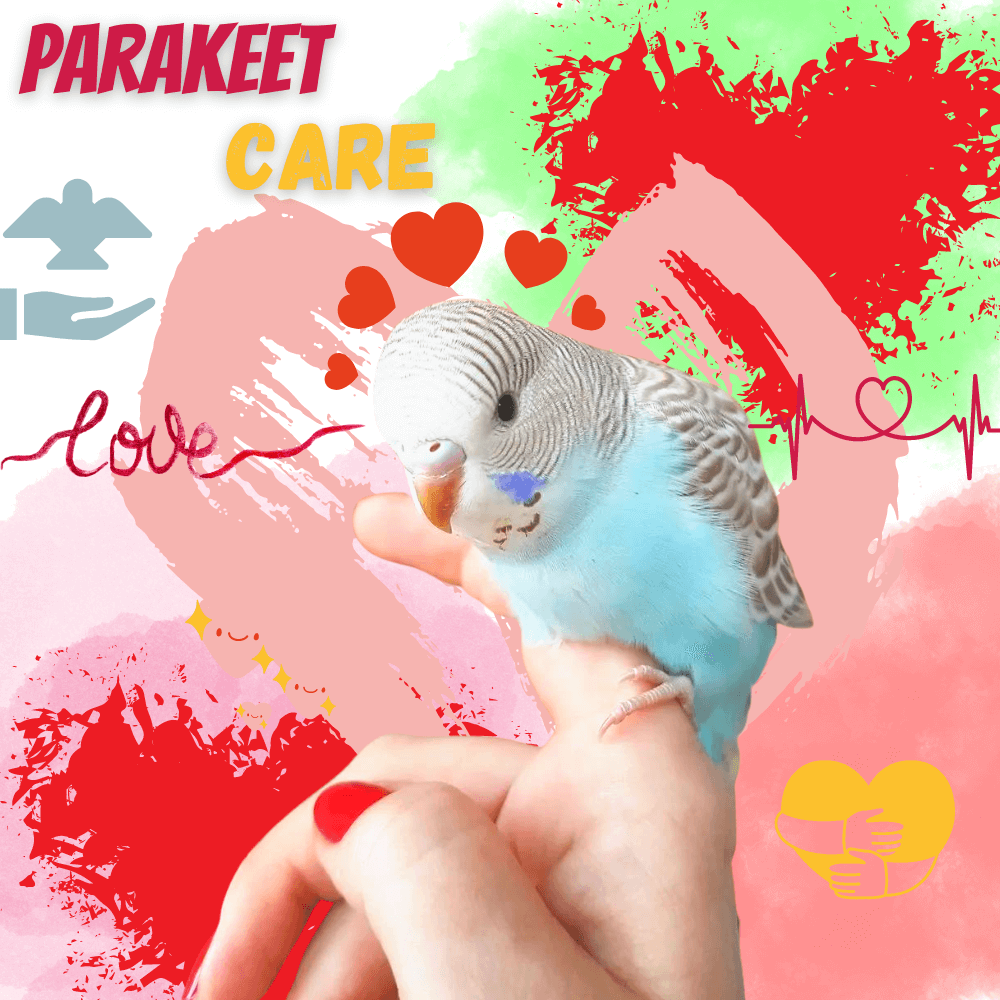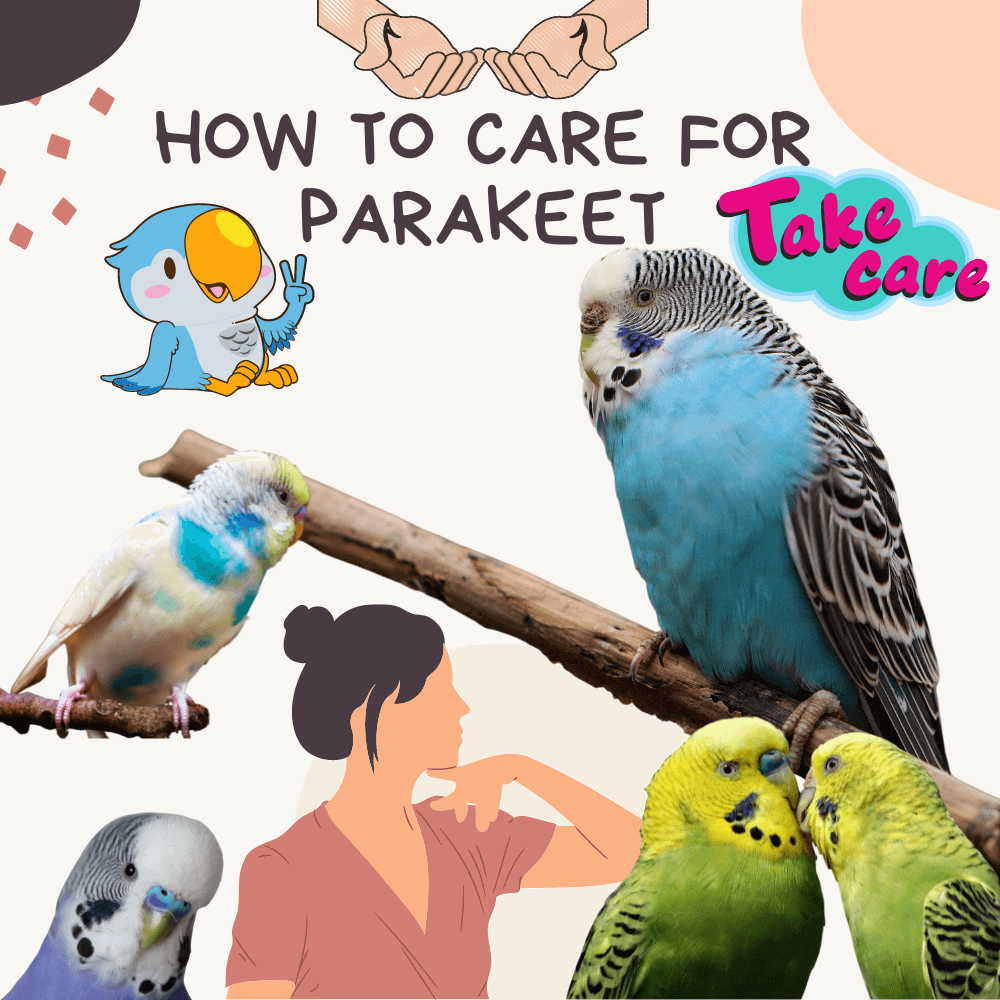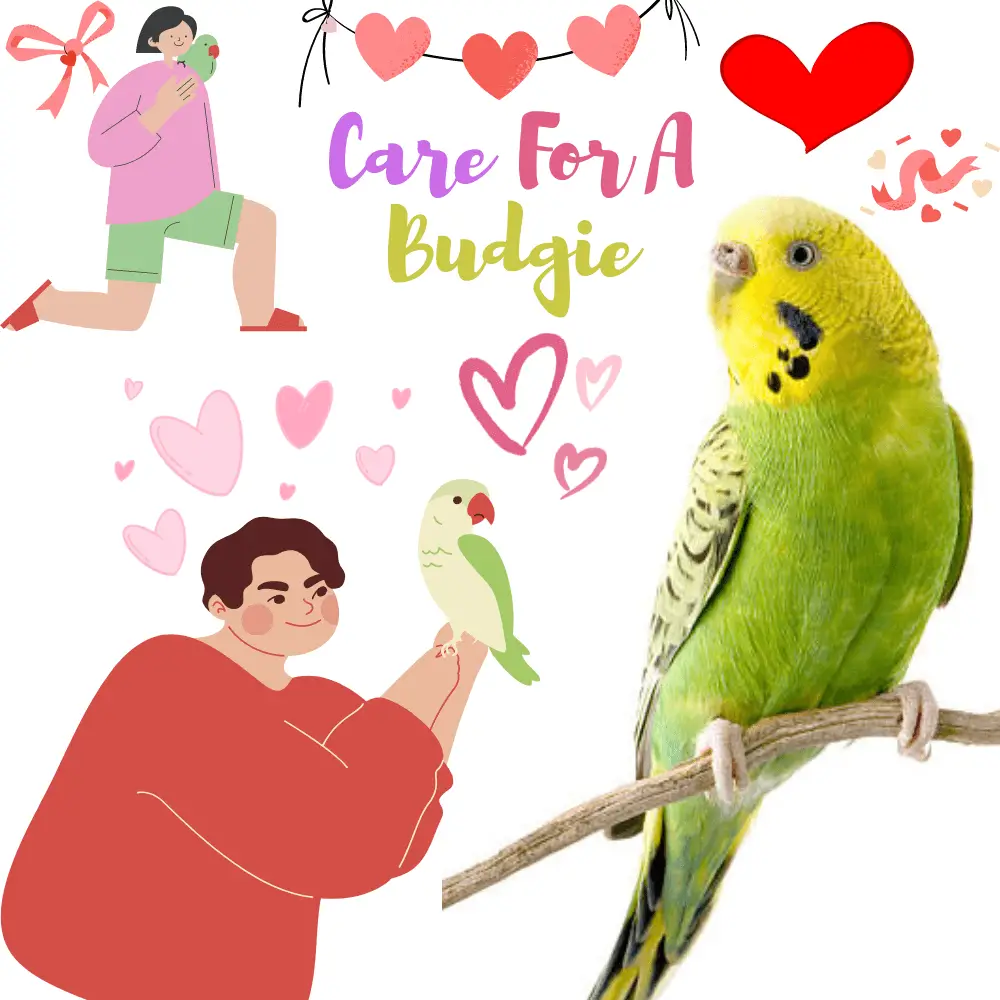
Parakeet care: Parakeets are funny, cute, and mischievous characters to rub shoulders with. They offer great camaraderie and love to show you when they are happy by chirping and strutting around on their perch. They can often be seen dancing and singing to music and they love nothing more than interacting with their peers and humans.
However, before you decide if a budgie is a right pet for you, you need to make sure you know what a budgie needs to lead a happy and healthy life. You can then decide if you can give your budgie the time and attention it deserves.
Equipment required:
- Cage: Ideally, the cage should measure 100 cm x 50 cm x 80 cm (40 inches x 20 inches x 32 inches). When looking for a cage, try to find one with horizontal and vertical bars, as budgies like to climb with their feet and beaks, as well as fly.
- Food bowls and water bowls
- Perches: Preferably wooden, not plastic. You can use natural branches as perches, such as those of willows, elderberries, and apple trees. Branches of different widths will help your budgie exercise his feet and keep his nails short.
- Toys, including swings, bells, ladders, and mirrors.
- Power supply (see separate section below)
- Sandpaper for the base of the cage.
- Grit (see separate section below)
- Cuttlefish: This is so that your bird can sharpen and file its beak, and it’s also good for the bones.
- Mineral block
- Birdbath
Considerations when buying a budgie
Parakeets are easy animals to care for and have few needs. However, it’s important to make sure you’re fully aware of the commitment you’re making before deciding if a budgie is a right pet for you. The average lifespan of a budgie is 8-10 years, but it can live longer. In addition, your budgie will need daily exercise, and its food and water bowls should be cleaned regularly.
One or two birds?
You should also consider whether you want a simple budgie or a pair. Parakeets provide their owners with huge entertainment and company, but if you can’t give your bird a lot of time and attention, it can feel lonely and stressed. So you can decide to buy a pair that can keep each other company.
If you decide to buy a pair, it is advisable to buy a man and a woman or two men. Two hens will almost certainly fight and hurt each other. A male and female will not produce offspring unless they have a nest box.
Make yourself heard…
Signs of a healthy and happy budgie
When buying a budgie from a breeder or pet store, you need to make sure that it is a healthy bird. Here are some things to check:
- A clean and well-maintained environment. The cage should not be cluttered and dirty.
- Active, playful, and talkative parakeets. They should not be shy or silent.
- Make sure the eyes and nostrils of the budgie are clean and without discharge.
- Feathers should be elegant and healthy-looking. They must not be damaged.
- The feet of the budgie should be clean with four toes on each.
How to make sure you’re buying a budgie
If you want to make sure that the breeder or pet store sells you a baby budgie rather than an adult, you need to make sure:
- The bar on the head extends to the cereals (waxy cover at the base of the upper beak).
- The eyes are dark and lack the white iris that most adult parakeets possess.
- Cereals are purple. In adult males, cereals are usually blue in most varieties; In adult females, they are usually brown.
Settling into your new budgie
Before bringing your new pet home, you need to make sure that the crate is ready and located in a quiet place in the house, away from loud noise, excessive heat, or drafts. You can cover half of the cage with a cloth or sheet so that the budgie has a place to hide and feel safe.
Arriving home, you need to introduce your bird into its cage and let it settle on its own. Your budgie will be very scared at first and will need time to get used to its surroundings. It may take a few weeks for your budgie to gain confidence.
Parakeet care

Diet and nutrition
Your budgie will need food and fresh water every day. Your budgie’s main food source should be a mixture of good-quality budgie seeds.
When your budgie eats a seed, it nibbles the husk of the grain and leaves it in the food bowl. The empty husks then accumulate at the top of the seed bowl and must be removed every day so that your budgie can reach the fresh seeds.
The water must be renewed daily to keep it clean and free of bacteria.
Your budgie will also need a small number of fresh greens or fruit each day. Green fruits and vegetables are safe:
- Apple
- Grape
- Broccoli
- Kiwi
- Melon
- Bird mural
- Spinach leaves
- Carrot
- Fishing
- Pear
- Plum
- Mango
Don’t feed your budgie avocado or lettuce.
A block of minerals and cuttlefish can be placed in the cage to hold your budgie’s beak and provide it with extra minerals to help keep bones healthy.
There are many commercial treats in pet stores and supermarkets, such as seed bells and fruit sticks, but they are often high in honey and therefore should only be eaten occasionally. Parakeets also enjoy millet sprays as a treat, but you should keep in mind that millet makes you fat and should only be offered once a week.
Parakeet care

The sand controversy
Many budgie experts believe that budgies should always be provided with gravel because it is necessary for their digestive system. It is believed that gravel particles help break down the seed in the gizzard, ready for digestion. However, other experts dispute this claim and believe that the purpose of gravel is to help birds break down the husks they swallow with the seed because budgies do not eat the husks; They say there is no need to provide them with gravel.
This is ultimately the decision of the owner of the budgie. PDSA recommends gravel.
Exercise
Once your budgie has settled into her cage and she starts to gain confidence, you’ll need to make sure she’s getting enough exercise. Your budgie needs time to get out of its cage and fly away. The more time you have to let her out of her cage, the better. The environment must be safe, electric fans must be turned off, and you must ensure that all windows and doors are closed. Parakeets can be excellent escape artists and it is estimated that 6 out of 10 budgies escape each year.
Be warned that budgies love to chew wallpaper, kgs, magazines, and newspapers. If left unattended, they can damage your interior design. Also make sure that there are no poisonous, thorny, or pungent plants in the room.
Other hazards include candles, toilets, water containers in which your budgie could drown, ovens, fires, and toxic substances such as graphite in pencils, adhesives, varnishes, and detergents.
Sleep and rest
Just like humans, budgies are diurnal. This means that they are awake during the day and sleep at night. However, be careful, if your budgie cage is placed near a window, it will wake up as soon as the sun rises and can be very cheerful at this time of day!
Parakeets need at least 10 hours of sleep each night. A good way to make sure your budgie gets enough rest is to cover his cage at night and remove the blanket once you’re awake in the morning.
Your budgie will also doze off during the day. You can tell when your budgie is asleep because she is sitting quietly, eyes closed, one leg erect and her head slightly tucked into the side of her wing.
Hygiene and cleaning of cages
Your budgie will keep itself clean by smoothing its feathers daily and bathing in its bird bath. However, it is up to you to ensure that your budgie’s cage and equipment are kept clean and safe.
All cleaning can be done with hot water and with a wire brush. Detergents should never be used as they are toxic, although animal-safe detergents can be purchased from pet stores.
See the table below for a list of tasks you’ll need to complete.
Parakeet care

Cleaning tasks for budgie owners
Provide clean water and remove the husks from the top of your budgie’s seed.
Clean the cage thoroughly with hot water and, if necessary, with a detergent that is safe for animals.
Check the cage and clean dirty toys or perches.
Replace sandpaper.
Remove fruits or greens that have remained in the cage for more than 24 hours.
Make sure all toys, perches, and utensils are clean.
How to take Care of a Parakeet
SOURCE:Alen AxP




















